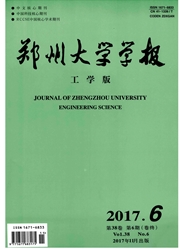

 中文摘要:
中文摘要:
为了实现交叉口时空资源的最佳利用,以流量、速度及延误3个参数建立了交叉口交通流的通行效率模型,在此基础上考虑到多冲突点情形构建了整个交叉口通行效率模型,并以普遍采用的无控制、两相位、三相位及四相位4种控制方式为对象,提出了4种控制方式下交叉口通行效率的计算方法,同时,基于具体数据求解了不同流量条件和不同控制方式下交叉口的通行效率数值.结果表明:当每个进口道流量小于100 veh/h时,无控制方式的通行效率最大;当流量位于100~400 veh/h时,两相位控制的通行效率最大;当流量大于400 veh/h时,四相位控制的通行效率最大.
 英文摘要:
英文摘要:
In order to achieve optimum utilization of time-space resources at intersections, volume, speed and delay were selected as three parameters to develop an efficiency model for traffic flow. In addition, the effi- ciency model for intersection was constructed based on multi-traffic conflict points. Four efficiency-oriented models for four popular control modes including uncontrolled intersection mode, two-phase mode, three-phase mode and four-phase mode were proposed, and the efficiency values were calculated according to the field vol- umes and control modes. The results indicate that the condition for an intersection under un-controlled mode, two phases mode and four phases mode to reach its optimal efficiency is that the maximum volume is smaller than 100 vehicles, between 100 and 400 vehicles, and bigger than 400 vehicles, per hour per approach, re- spectively.
 同期刊论文项目
同期刊论文项目
 同项目期刊论文
同项目期刊论文
 期刊信息
期刊信息
